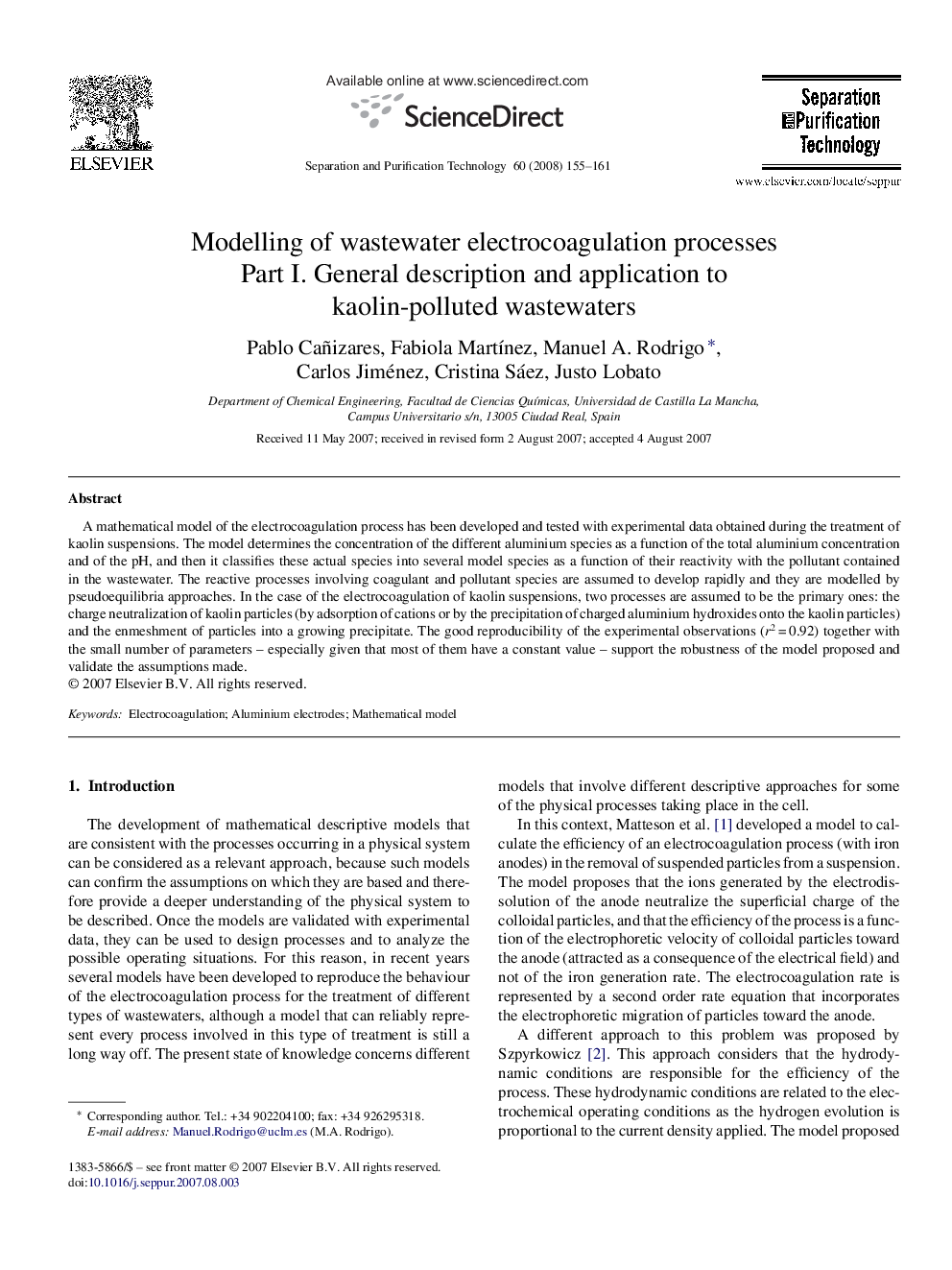| Article ID | Journal | Published Year | Pages | File Type |
|---|---|---|---|---|
| 643958 | Separation and Purification Technology | 2008 | 7 Pages |
A mathematical model of the electrocoagulation process has been developed and tested with experimental data obtained during the treatment of kaolin suspensions. The model determines the concentration of the different aluminium species as a function of the total aluminium concentration and of the pH, and then it classifies these actual species into several model species as a function of their reactivity with the pollutant contained in the wastewater. The reactive processes involving coagulant and pollutant species are assumed to develop rapidly and they are modelled by pseudoequilibria approaches. In the case of the electrocoagulation of kaolin suspensions, two processes are assumed to be the primary ones: the charge neutralization of kaolin particles (by adsorption of cations or by the precipitation of charged aluminium hydroxides onto the kaolin particles) and the enmeshment of particles into a growing precipitate. The good reproducibility of the experimental observations (r2 = 0.92) together with the small number of parameters – especially given that most of them have a constant value – support the robustness of the model proposed and validate the assumptions made.
